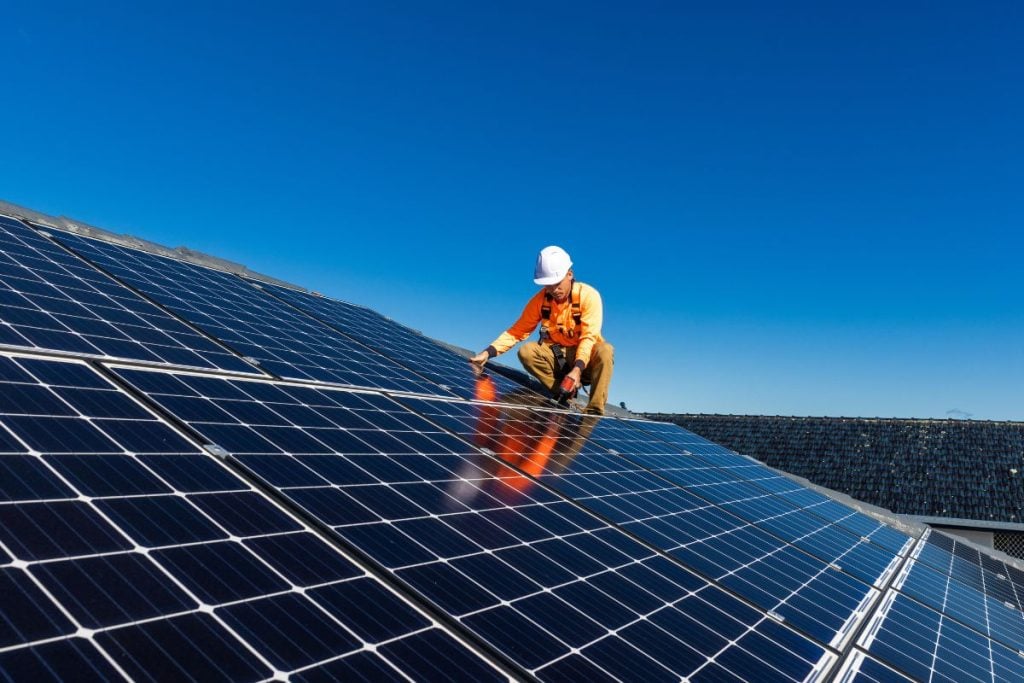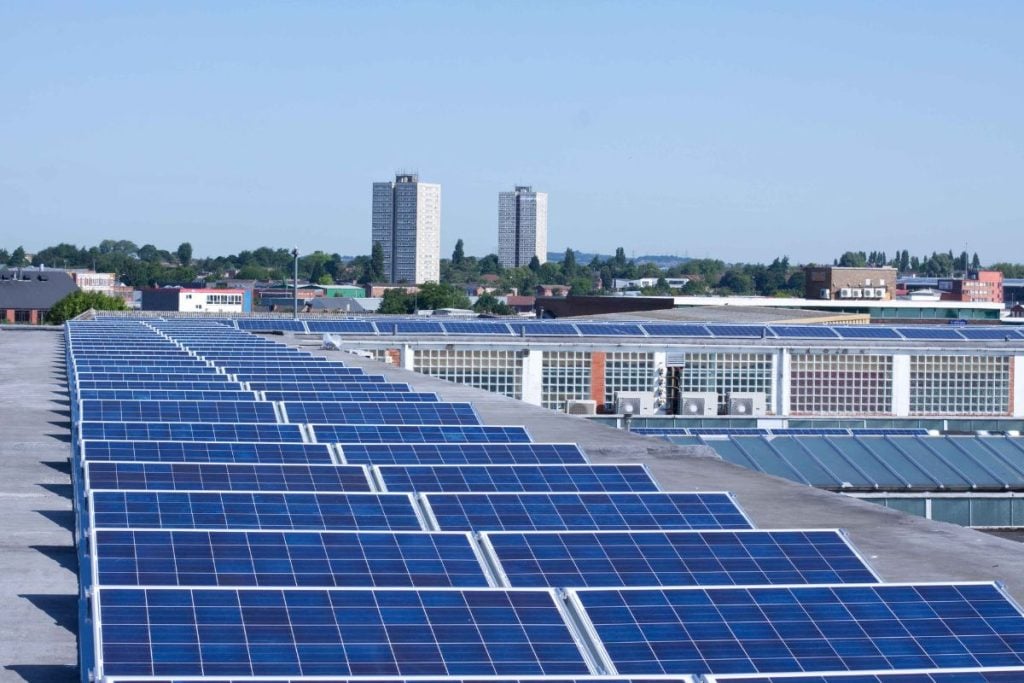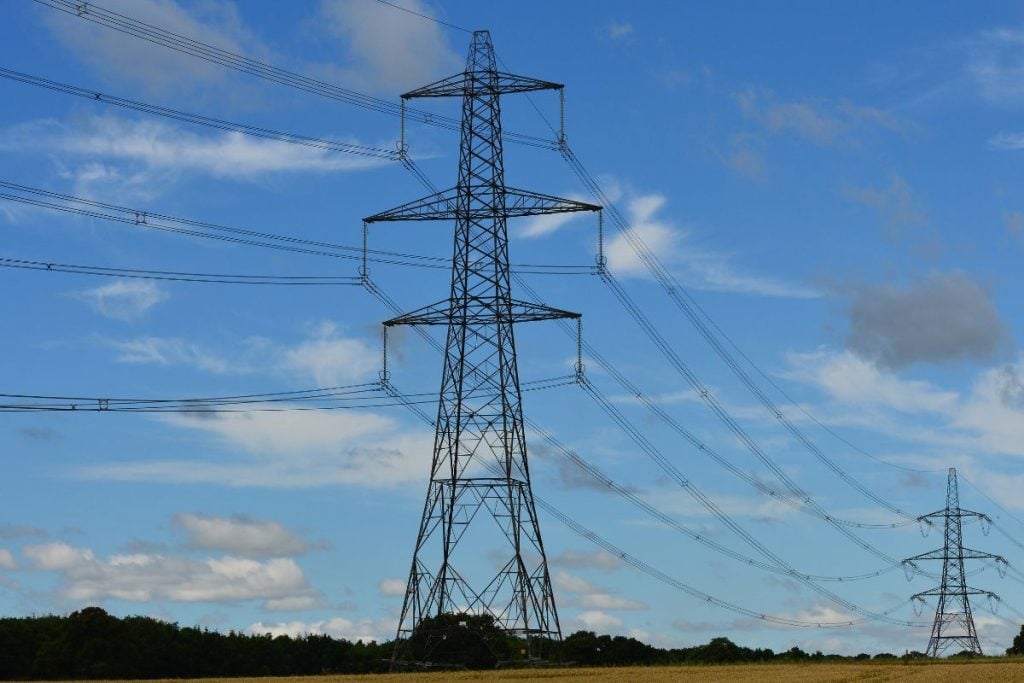For many businesses, one of the biggest motivations for investing in solar energy is the potential to dramatically cut electricity costs.
At InspireGreen, we specialise in helping organisations unlock that potential, but one key question often comes up: How do solar panels work with your electric bill?
In short, the clean energy that solar panels generate powers your operations, reducing the amount of electricity you need to buy from the grid. This, in turn, cuts your electric bill.
While you’ll still receive a bill from your energy supplier, it will typically be much lower, reflecting only the power you draw when your system isn’t producing enough energy.
We’ll explain more about how solar energy affects your electricity bill below, including what steps your business can take to maximise the financial benefits of going solar.
How Do Solar Panels Affect Your Electric Bill?
Once your business begins generating its own renewable power, you’ll quickly see the difference reflected on your electricity bills. Every kilowatt-hour of solar energy your panels produce is one you don’t have to purchase from the grid, meaning your overall energy costs begin to drop.
You won’t see a line on your bill showing ‘solar energy used’, but you’ll notice your grid usage shrinking over time. The result is simple: lower consumption, lower costs, and greater control over how your business uses and pays for energy.
If your solar system produces more power than your site needs during the day, which often happens for commercial systems with large roof areas, that extra electricity can be sent back to the grid.
Companies can earn payments for the energy they export by signing up to a Smart Export Guarantee tariff, turning unused generation into an additional source of revenue.
When both your electricity supply and SEG tariff come from the same provider, you may even see credits listed on your bill showing how much you’ve earned through export payments. This can boost your bottom line and strengthen your business case for renewable investment.

How Much Do Solar Panels Save on Electricity Bills?
According to What Cost, a 20kW commercial solar system can save businesses approximately £5,500 annually, equating to about £458 per month.
This represents a substantial reduction in electricity expenses, but the extent of savings depends on several factors.
1. Sunlight Exposure and Weather
Solar panels are most effective when they receive consistent sunlight. Seasonal changes, cloud cover, and shading from nearby structures or trees can all affect output.
Careful site assessment ensures your panels are positioned to capture the maximum sunlight throughout the year.
2. Panel Positioning and Orientation
The angle and placement of your panels are critical for efficiency. Panels installed at the correct tilt and facing the optimal direction will capture more sunlight, generating more energy.
For commercial properties, this may involve adjusting the layout across rooftops or even using multiple arrays for different orientations.

3. Battery Storage Solutions
Integrating battery storage allows your business to store excess energy produced during peak sunlight hours for use later, including evenings or overcast periods.
This maximises the use of your solar energy and reduces the need to buy power from the grid, further lowering your electricity costs.
4. Exporting Excess Energy (SEG)
If your system produces more electricity than your business uses, selling surplus energy back to the grid through a Smart Export Guarantee (SEG) tariff can generate additional revenue and boost overall savings.
How Are Solar Panels Connected to the National Grid?
When we install a commercial solar system, one crucial step is notifying your local Distribution Network Operator (DNO) before the work begins. Typically, this notification happens around two weeks prior to installation.
The DNO is responsible for managing the local electricity network, ensuring that the energy flowing from your solar panels integrates safely and efficiently with the wider grid.
It’s important to understand that the DNO is not your energy supplier. Instead, they maintain and operate the infrastructure (the wires, transformers, and substations) that deliver electricity from the national grid to your site.
By alerting the DNO to your new solar installation, we ensure your system is properly tested, inspected, and optimised for performance without disrupting the surrounding network.
For businesses, this step is critical. A properly registered and connected solar array allows your operations to reliably draw power from your system, export surplus energy when available, and take full advantage of schemes like the Smart Export Guarantee.

Do You Need to Tell Your Energy Supplier You Have Solar Panels?
For most businesses, there’s no need to contact your energy supplier after installing solar panels. Your system will automatically start reducing your grid consumption and lowering your electricity bills without any action required on your part.
Important Exception: The only time your energy supplier needs to be informed is if you plan to take part in a Smart Export Guarantee (SEG) tariff to sell surplus electricity back to the grid.
In that case, your supplier will need details about your system to set up export payments correctly. If you choose an SEG tariff from a different company, only that supplier needs to be notified.
However, as mentioned previously, your Distribution Network Operator (DNO) must always be informed when a solar system is connected to the grid.
A registered solar installation allows the DNO to maintain network stability and safety while letting your business generate and, if applicable, export electricity efficiently.
Typically, your solar installer will submit the necessary paperwork to your DNO within 28 days of your system being commissioned and tested.
If, for any reason, this step isn’t completed, for example, if your panels were installed by a previous owner, you can contact the DNO directly to get your system approved.
How Can We Help
At Inspire Green, our goal is to make the transition to commercial solar power simple, efficient, and highly rewarding.
We provide end-to-end solutions designed to save your business money, reduce carbon emissions, and maximise energy independence.
Our team works closely with you to design a system that fits your building and long-term goals.
Contact us today to find out how your business can benefit from commercial solar solutions.





